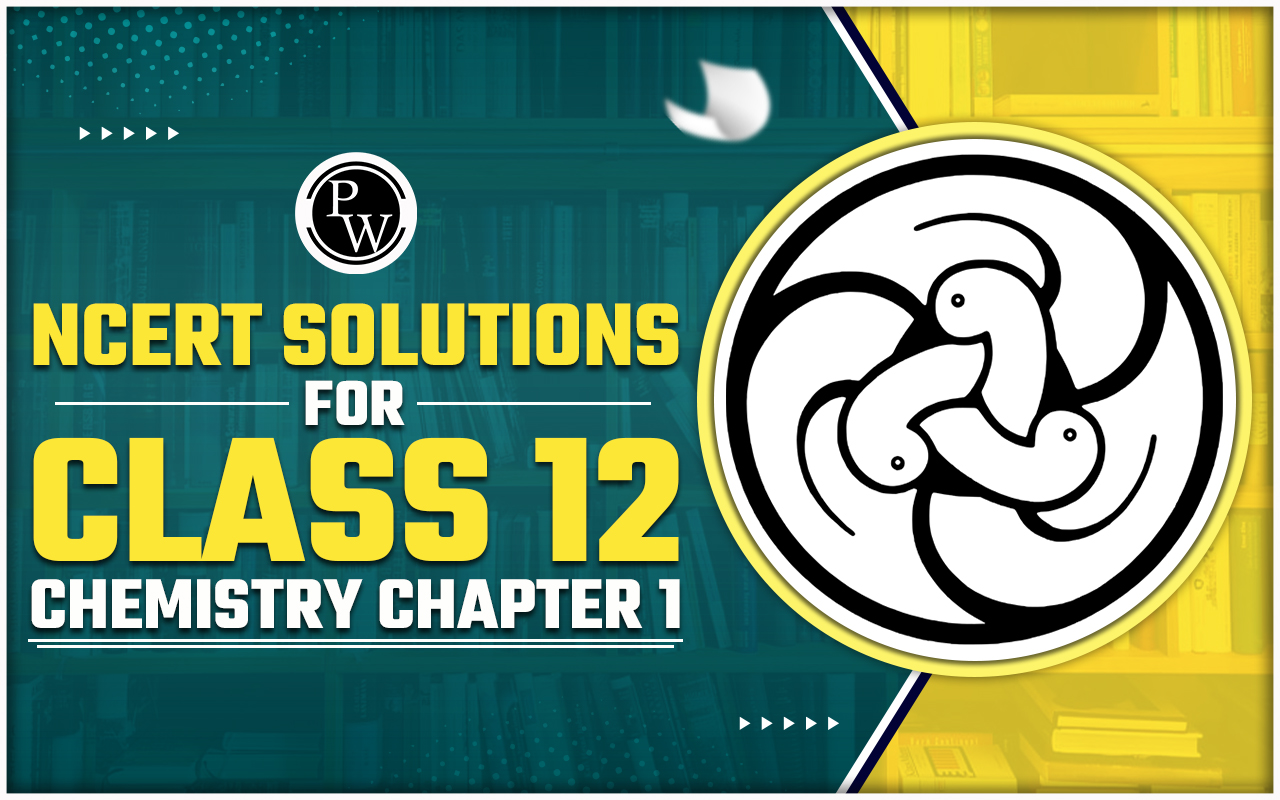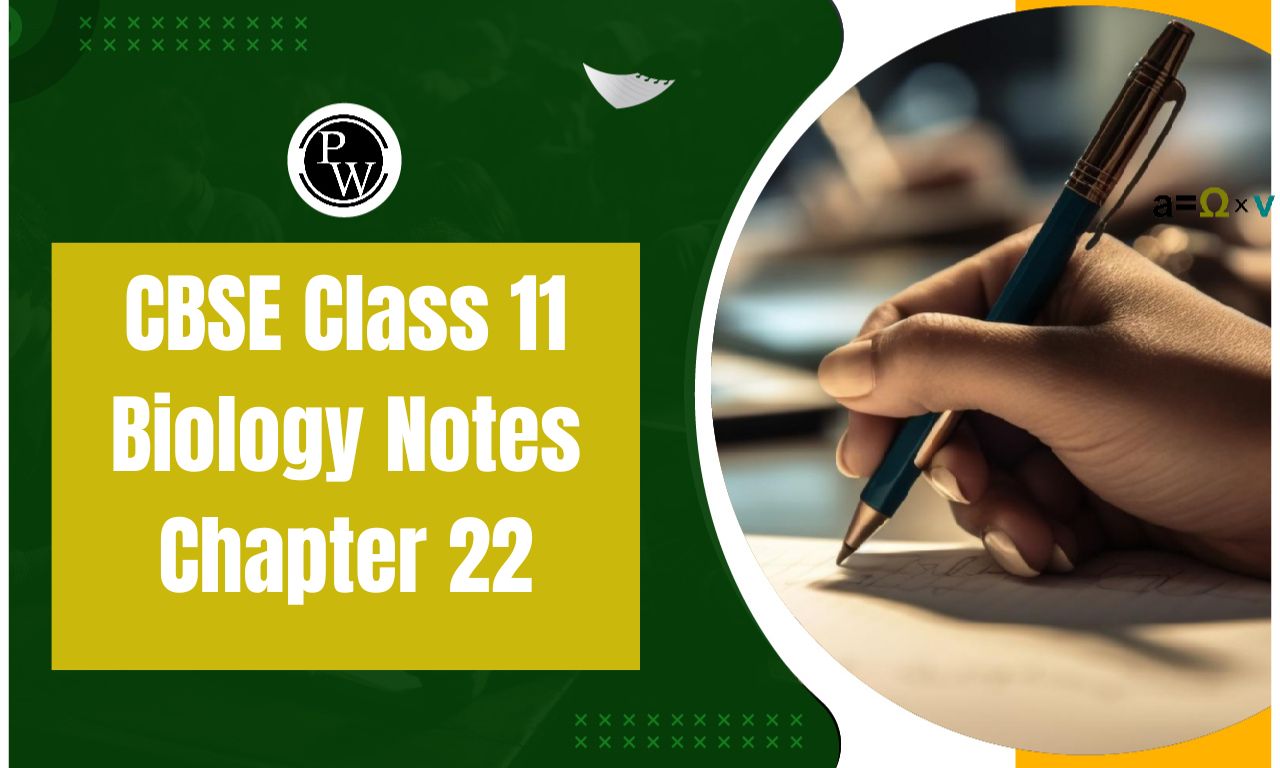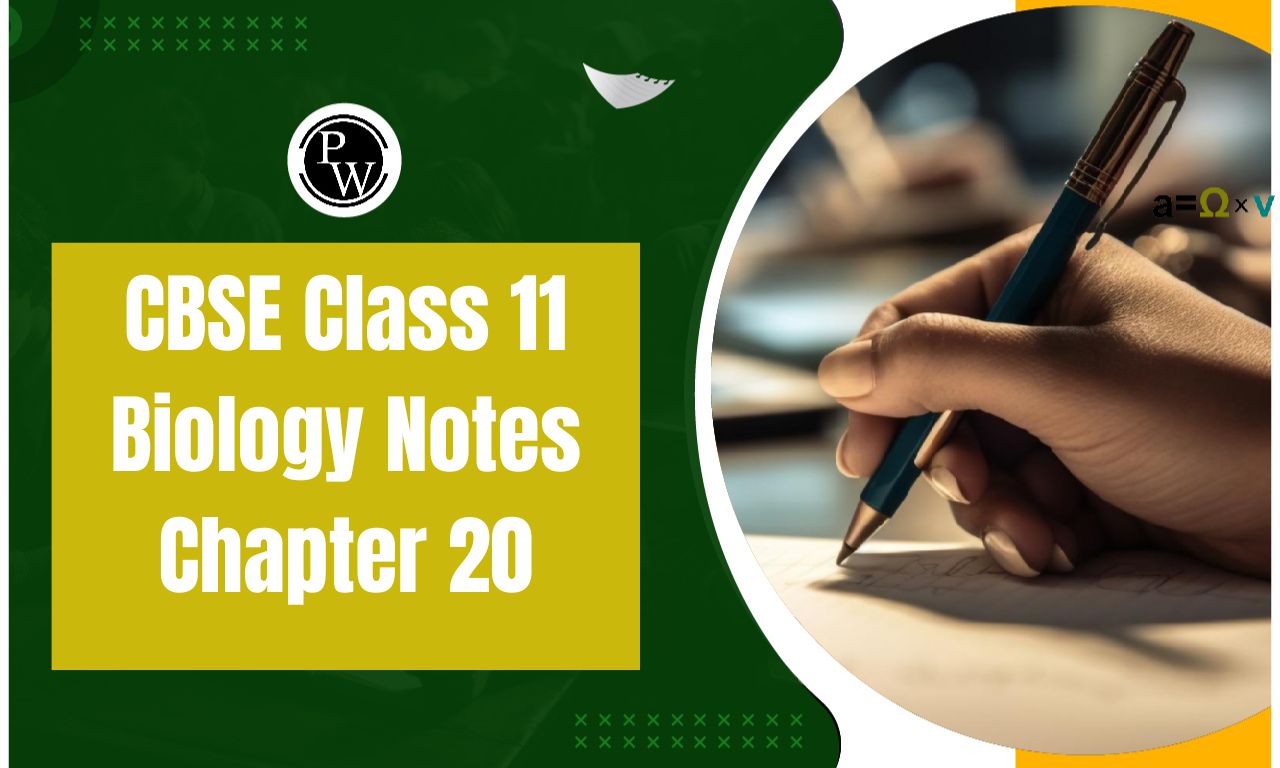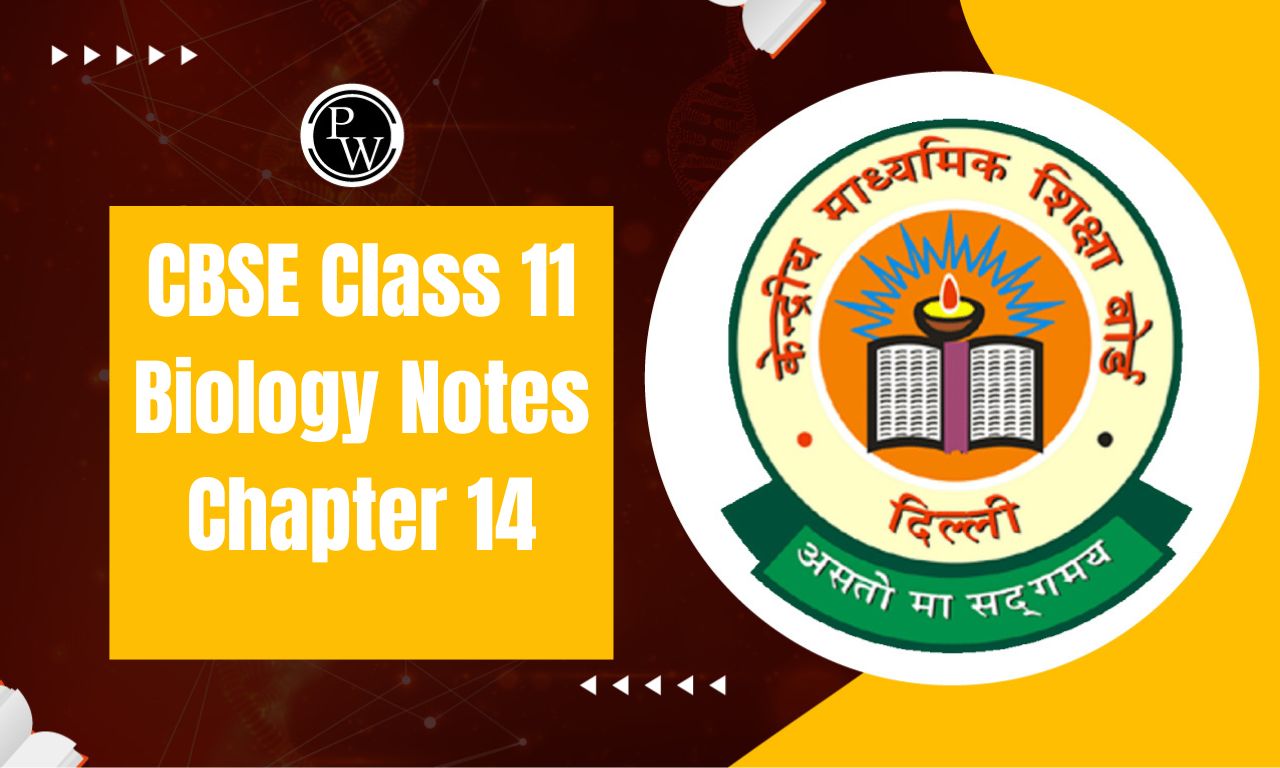
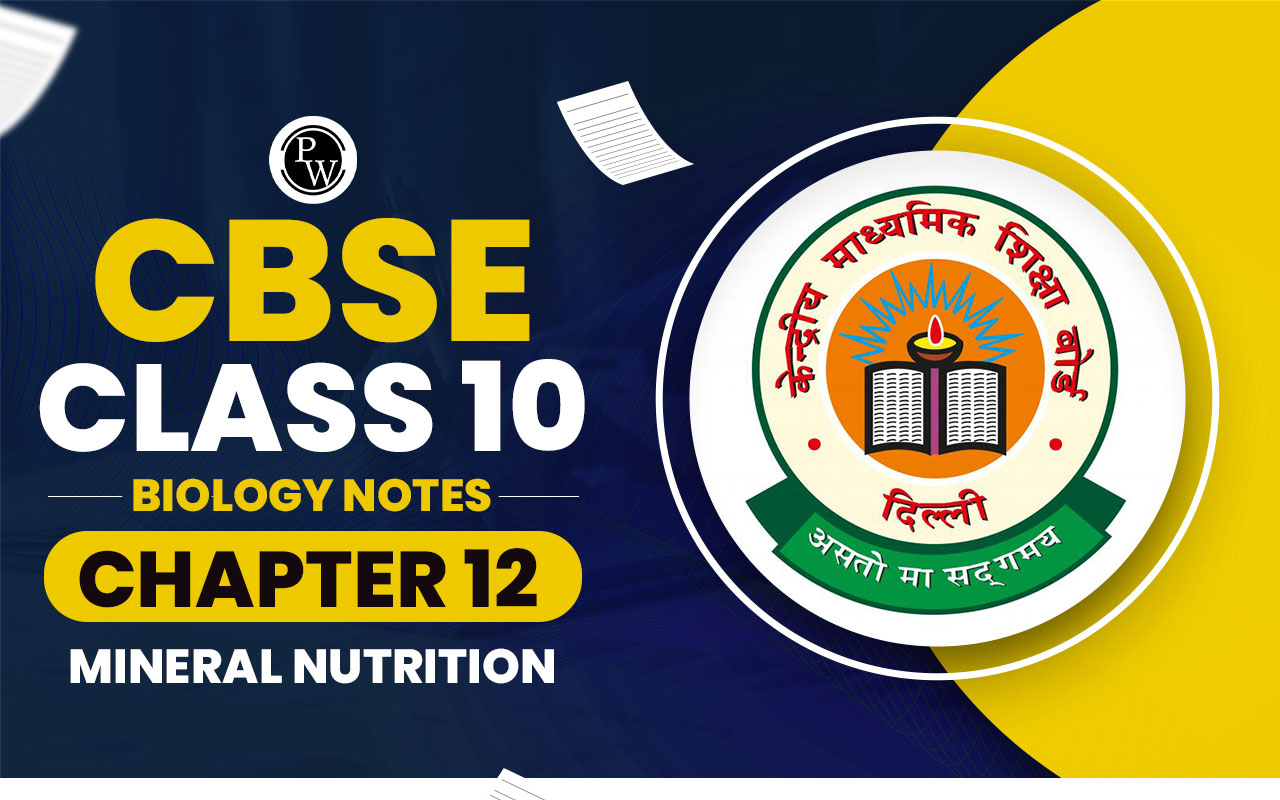
CBSE Class 11 Biology Notes Chapter 12: CBSE Class 11 Biology Notes Chapter 12 covers the topic of mineral nutrition. In the CBSE class 11 biology notes chapter 12 notes, we will look at the many minerals essential for life and what their specific functions are. The roles and functions of all essential minerals are very important for the board exam and entrance exam and students find it very difficult to remember them. This is why we have provided CBSE Class 11 Biology Notes Chapter 12. Students can use these notes as a study guide which can be quite beneficial.
CBSE Class 11 Biology Notes Chapter 12 Overview
CBSE Class 11 Biology Notes Chapter 12 focuses mainly on inorganic plant nutrition, wherein students will study the methods to identify elements essential to the growth and development of plants and the criteria for establishing their essentiality. Students will also study the role of the essential elements, their major deficiency symptoms and the mechanism of absorption of these essential elements.Minerals Definition
Minerals are essential nutrients required by plants for various physiological functions. Deficiencies or excesses of these minerals can lead to various physiological disorders in plants, affecting their growth, yield, and overall health.What are Essential Mineral Elements?
Essential mineral are those substances that a plant requires for normal functioning but cannot synthesize in sufficient quantities and must be obtained from the environment.Criteria for Essentiality
Below are the criteria for an element to be considered essential:- The element must be important for normal growth and reproduction. If the element is absent, plants cannot complete their life cycle or produce seeds.
- The need for the element must be specific and cannot be substituted by another element.
- The element must play a direct role in the plant's metabolism.
Classification of Minerals Based on Quantitative Requirements
Elements are further divided into two broad categories based on their quantitative requirements, which are mentioned below: Macronutrients: Macronutrients are typically found in plant tissues in significant quantities, exceeding 10 mmol/kg of dry matter. These macronutrients include carbon, hydrogen, oxygen, nitrogen, phosphorus, sulfur, potassium, calcium, and magnesium. Carbon, hydrogen, and oxygen are primarily derived from carbon dioxide and water, while the rest are absorbed from the soil as mineral nutrients. Micronutrients: Micronutrients, also known as trace elements, are required in very small amounts, less than 10 mmol/Kg of dry matter. Copper, zinc, Iron, manganese, boron, nickel, and molybdenum are among them.Classification of Minerals Based on Functions
Based on the variety of roles that they perform, essential elements can also be divided into four major categories. These categories are:- Those elements which are fundamental components of biomolecules serve as structural elements within cells. Examples include carbon, hydrogen, oxygen, and nitrogen.
- Those elements which are the main parts of energy-related chemical compounds within plants. For example, magnesium is a component of chlorophyll, while phosphorus is found in ATP (adenosine triphosphate).
- Those elements which play roles in enzyme activation or inhibition. For example, magnesium ions (Mg^2+) activate key enzymes involved in photosynthetic carbon fixation, while zinc ions (Zn^2+) activate alcohol dehydrogenase.
- Some essential elements can influence the osmotic potential of cells. Potassium, for instance, is essential for regulating the opening and closing of stomata, thereby affecting the plant's water balance.
Roles of Macronutrients and Micronutrients
Essential elements provide multiple functions, various roles and functions of essential nutrients are provided below. Nitrogen:- Plants require nitrogen in the largest quantity.
- It is absorbed primarily as nitrate (NO3-) but also as nitrite (NO2-) or ammonium (NH4+).
- Nitrogen is essential for all plant parts, especially meristematic tissues and metabolically active cells.
- It is a major component of proteins, nucleic acids, vitamins, and hormones.
- Plants absorb phosphorus as phosphate ions (H2PO4- or HPO4^2-).
- It is required for cell membranes, certain proteins, nucleic acids, and phosphorylation reactions.
- Absorbed as potassium ions (K+)
- Potassium is needed in higher quantities in meristematic tissues, buds, leaves, and root tips.
- It helps maintain cell ion balance, protein synthesis, stomata regulation, enzyme activation, and cell turgidity.
- Plants take up calcium as calcium ions (Ca2+).
- Required for meristematic and differentiating tissues
- Calcium helps in cell wall synthesis, mitotic spindle formation, membrane function, enzyme activation, and metabolic regulation.
- Absorbed as divalent Mg2+ ions, magnesium activates enzymes for respiration, photosynthesis, DNA, and RNA synthesis.
- It is a component of chlorophyll and maintains ribosome structure.
- Plants obtain sulfur as sulfate ions (SO4^2-).
- It is present in amino acids, coenzymes, vitamins, and ferredoxin.
- Absorbed as ferric ions (Fe3+), iron is crucial for electron transfer proteins, catalase activation, and chlorophyll formation.
- Absorbed as manganese ions (Mn2+), manganese activates enzymes for photosynthesis, respiration, and nitrogen metabolism, particularly in water-splitting during photosynthesis.
- Plants absorb zinc as Zn2+ ions, which activate various enzymes, especially carboxylases, and aid in auxin synthesis.
- Absorbed as cupric ions (Cu2+), copper is essential for overall plant metabolism, involved in redox reactions and enzyme activation.
- Plants take up boron as borate ions (BO3^3- or BO4^2-), necessary for Ca2+ uptake, membrane function, pollen germination, cell elongation, differentiation, and carbohydrate transport.
- Absorbed as molybdate ions (MoO4^2-), molybdenum is a component of enzymes like nitrogenase and nitrate reductase crucial for nitrogen metabolism.
- Absorbed as chloride ions (Cl-), chlorine along with Na+ and K+
- Calcium helps regulate solute concentration and anion-cation balance in cells.
- It is essential for water-splitting in photosynthesis.
What is Nutrient Deficiency?
The concentration below which plant growth is slowed is termed the critical concentration, and if the element falls below this level, it's considered deficient. When the supply of an essential element is limited, plant growth is hindered.Deficiency Symptoms
Each essential element has specific roles in plants, and their absence leads to morphological changes known as deficiency symptoms.- Deficiency symptoms vary depending on the element and disappear when the lacking nutrient is supplied, but prolonged deprivation can lead to plant death.
- Elements actively mobilized and exported to young tissues show symptoms first in older tissues. For example, nitrogen, potassium, and magnesium deficiencies manifest in senescent leaves first.
- Elements relatively immobile within mature organs exhibit symptoms first in young tissues. Examples include sulfur and calcium, which are structural components of cells.
Types of Deficiency Symptoms
Chlorosis: Loss of chlorophyll leading to yellowing of leaves, caused by deficiencies of N, K, Mg, S, Fe, Mn, Zn, and Mo. Necrosis: Death of tissue, particularly leaf tissue, due to deficiencies of Ca, Mg, Cu, and K. Stunted Growth: Caused by lack or low levels of N, K, S, and Mo, which inhibit cell division. Premature Leaf and Bud Fall: Caused by deficiencies of certain elements. Delay in Flowering: Low levels of N, S, Mo delay flowering in plants.CBSE Class 11 Biology Notes Chapter 12 Benefits
The benefits of CBSE Class 11 Biology Notes Chapter 12 are provided below.- The notes help clarify important concepts such as the classification of minerals, their functions in plant and human nutrition, and the consequences of deficiencies.
- These notes categorize minerals into macronutrients and micronutrients, and further subdivide them based on their functions and sources.
- Students can use these notes as a quick reference to refresh their memory on important concepts and facts.
CBSE Class 11 Biology Notes Chapter 12 FAQs
What is meant by micronutrients?
Micronutrients are trace minerals and vitamins that a plant needs in very small quantities.
What is meant by macronutrients?
Macronutrients are the vitamins and minerals that a plant needs in large quantities.
What is Chapter 12 of Class 11 Biology about?
Chapter 12 of Biology Class 11 typically covers the concepts of nutrients required by plants for growth and functioning.
Where Can I find the notes for CBSE Class 11 Biology Chapter 12?
The CBSE Class 11 Biology Chapter 12 notes are provided in the article above. Students can read and download the notes as per their needs.
Is scoring 90 marks in Biology in board exams easy?
It may seem difficult, but it is possible to score 90 or above on the CBSE board biology exam with focus and hard work.
🔥 Trending Blogs
Talk to a counsellorHave doubts? Our support team will be happy to assist you!

Free Learning Resources
PW Books
Notes (Class 10-12)
PW Study Materials
Notes (Class 6-9)
Ncert Solutions
Govt Exams
Class 6th to 12th Online Courses
Govt Job Exams Courses
UPSC Coaching
Defence Exam Coaching
Gate Exam Coaching
Other Exams
Know about Physics Wallah
Physics Wallah is an Indian edtech platform that provides accessible & comprehensive learning experiences to students from Class 6th to postgraduate level. We also provide extensive NCERT solutions, sample paper, NEET, JEE Mains, BITSAT previous year papers & more such resources to students. Physics Wallah also caters to over 3.5 million registered students and over 78 lakh+ Youtube subscribers with 4.8 rating on its app.
We Stand Out because
We provide students with intensive courses with India’s qualified & experienced faculties & mentors. PW strives to make the learning experience comprehensive and accessible for students of all sections of society. We believe in empowering every single student who couldn't dream of a good career in engineering and medical field earlier.
Our Key Focus Areas
Physics Wallah's main focus is to make the learning experience as economical as possible for all students. With our affordable courses like Lakshya, Udaan and Arjuna and many others, we have been able to provide a platform for lakhs of aspirants. From providing Chemistry, Maths, Physics formula to giving e-books of eminent authors like RD Sharma, RS Aggarwal and Lakhmir Singh, PW focuses on every single student's need for preparation.
What Makes Us Different
Physics Wallah strives to develop a comprehensive pedagogical structure for students, where they get a state-of-the-art learning experience with study material and resources. Apart from catering students preparing for JEE Mains and NEET, PW also provides study material for each state board like Uttar Pradesh, Bihar, and others
Copyright © 2025 Physicswallah Limited All rights reserved.
Get App




